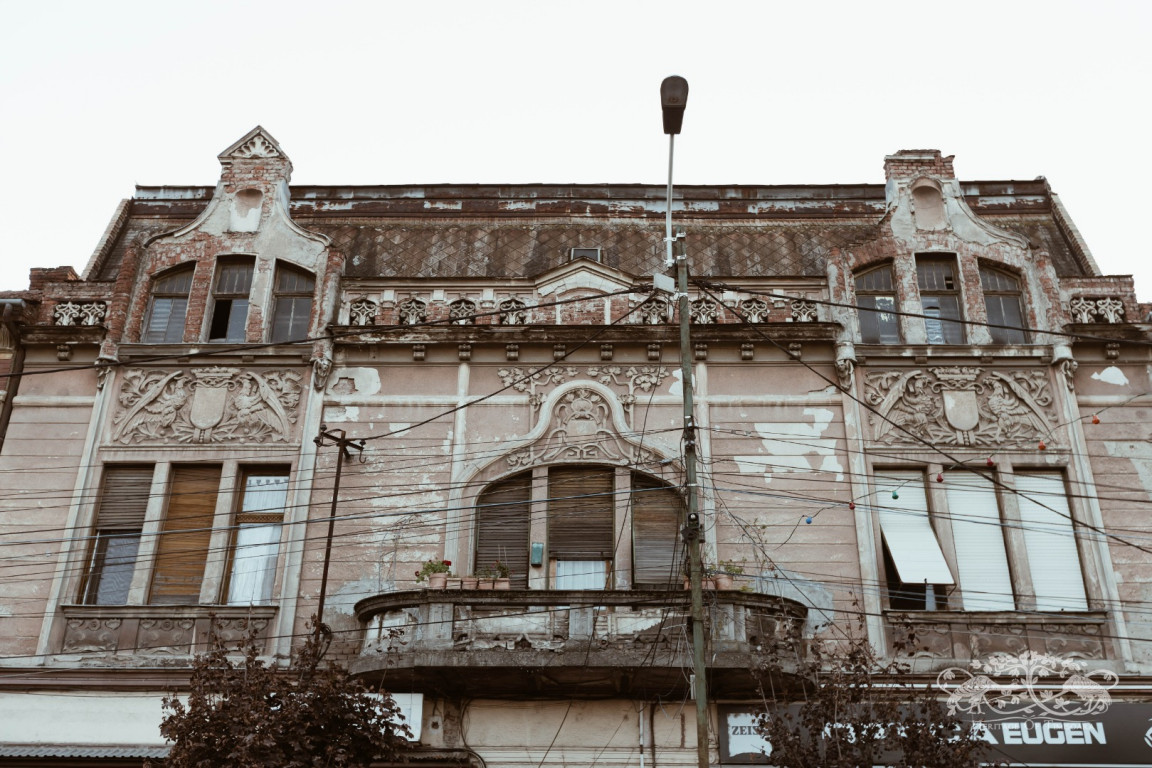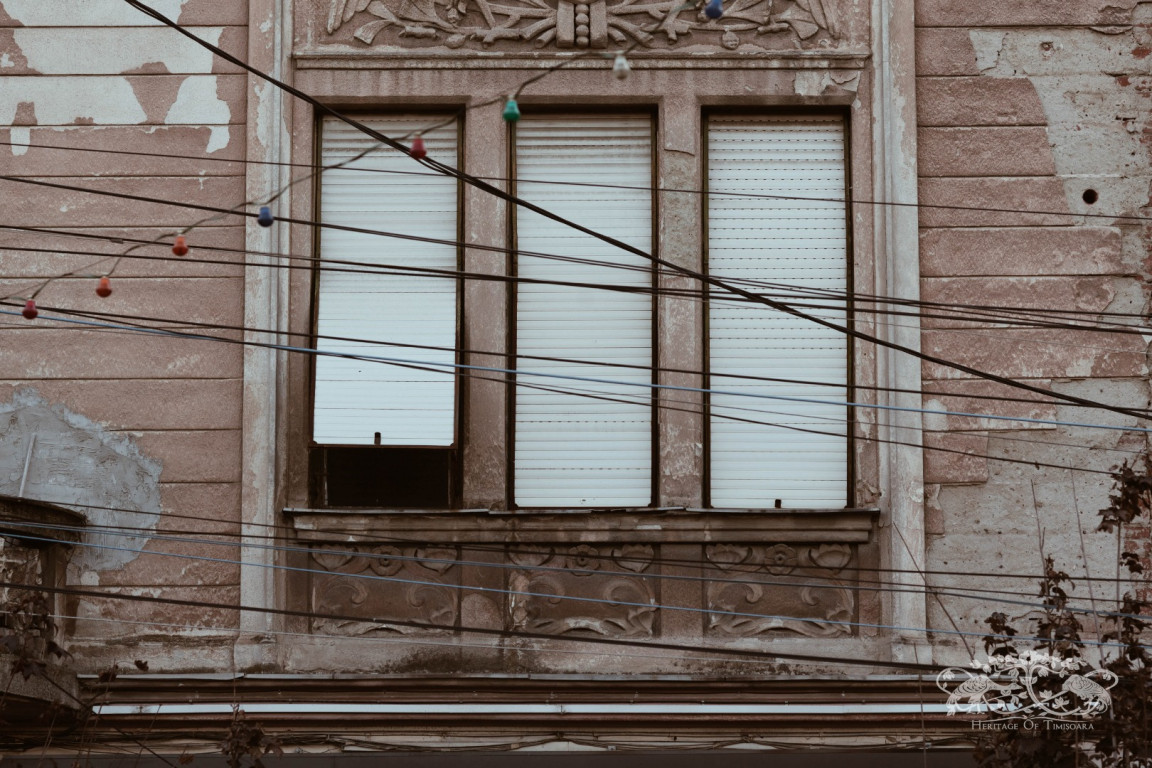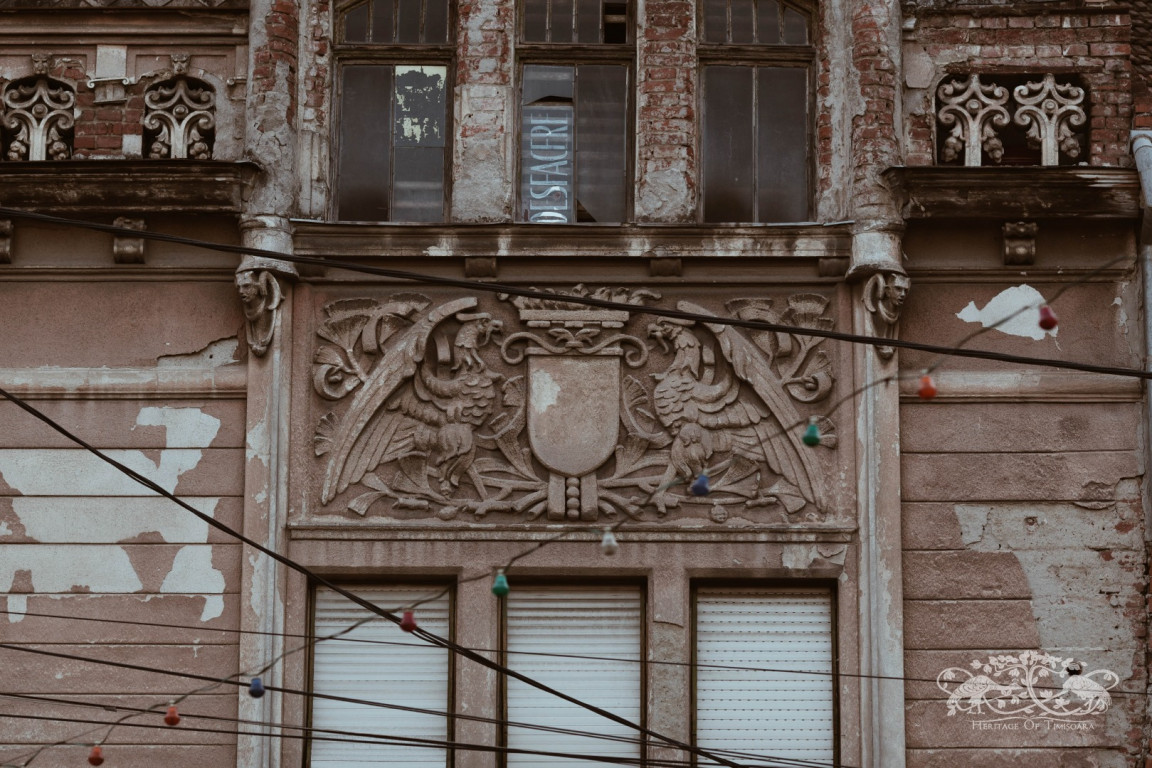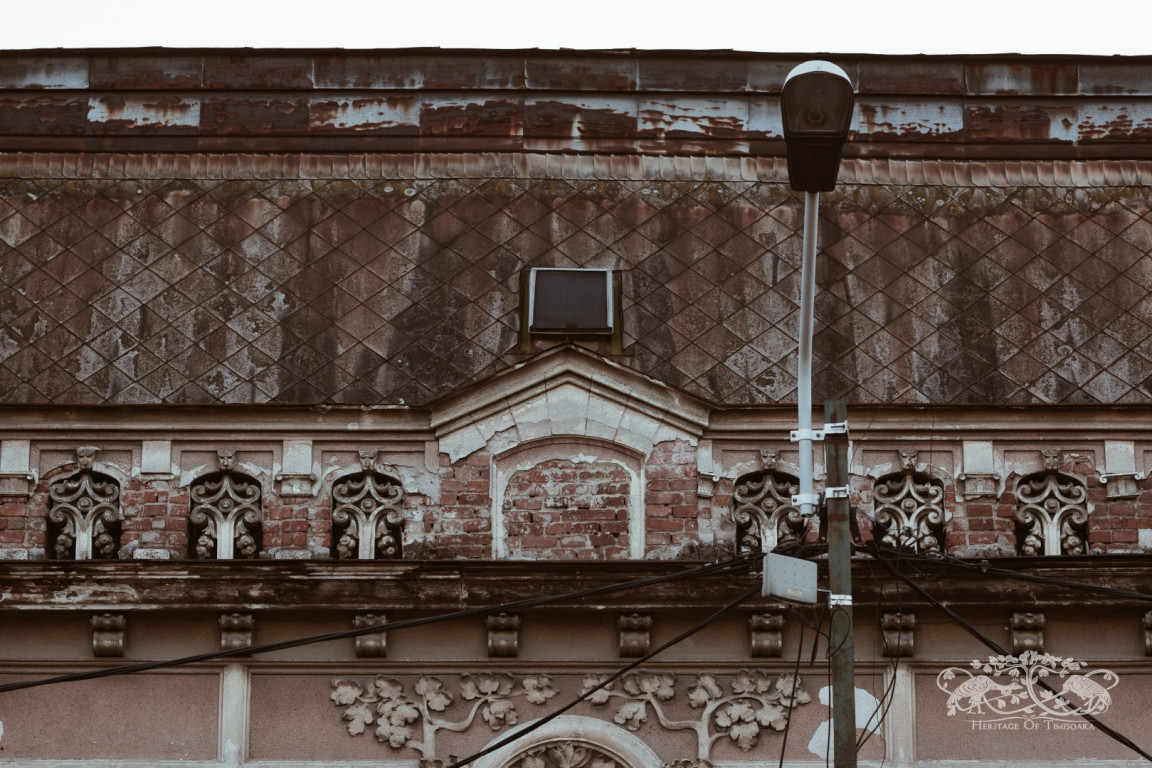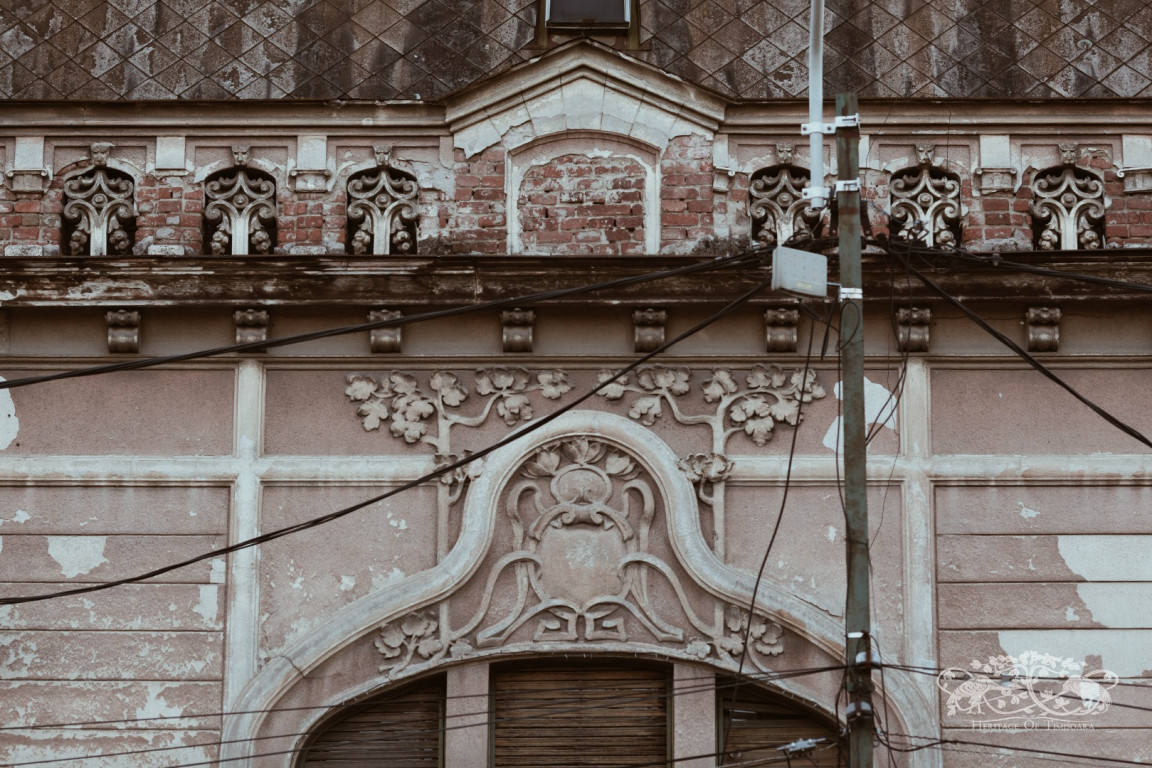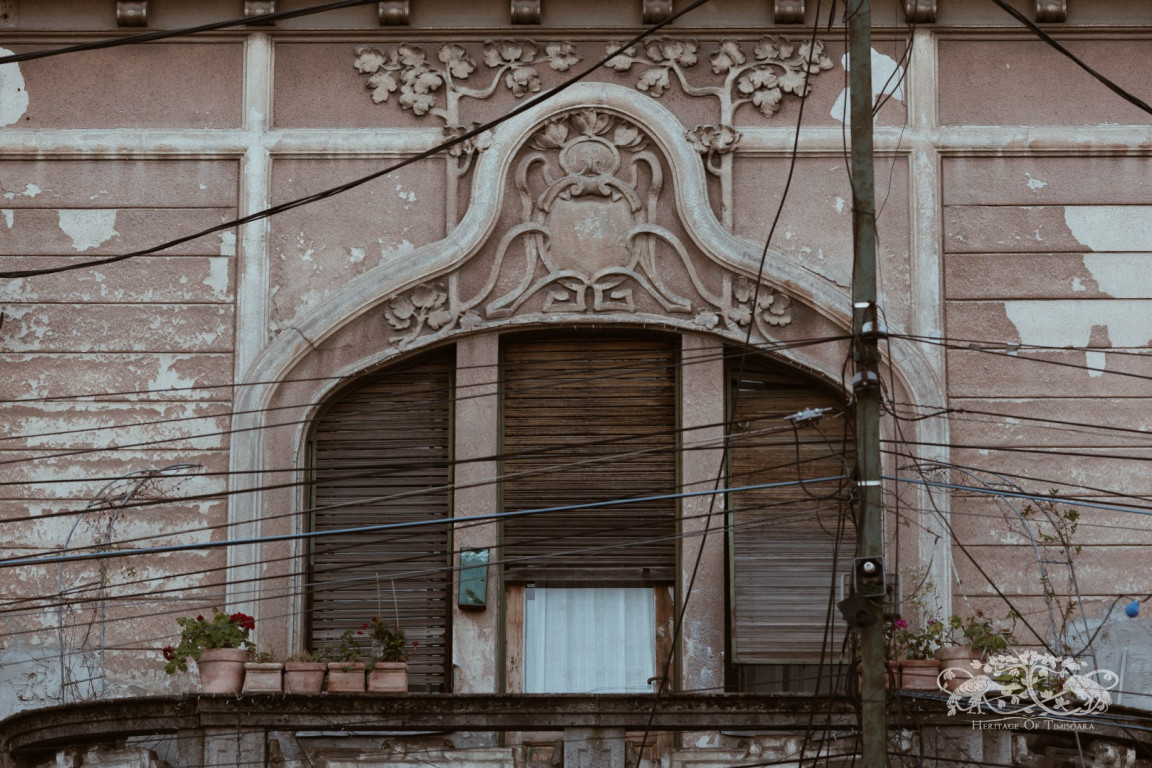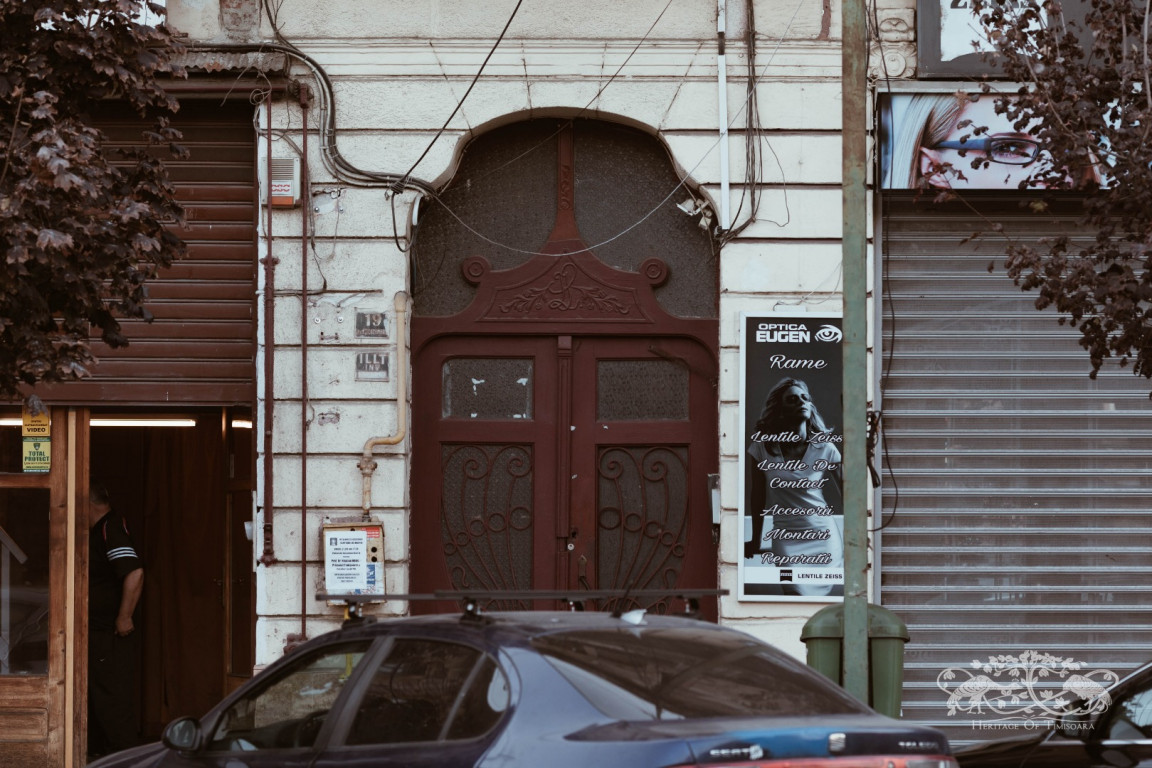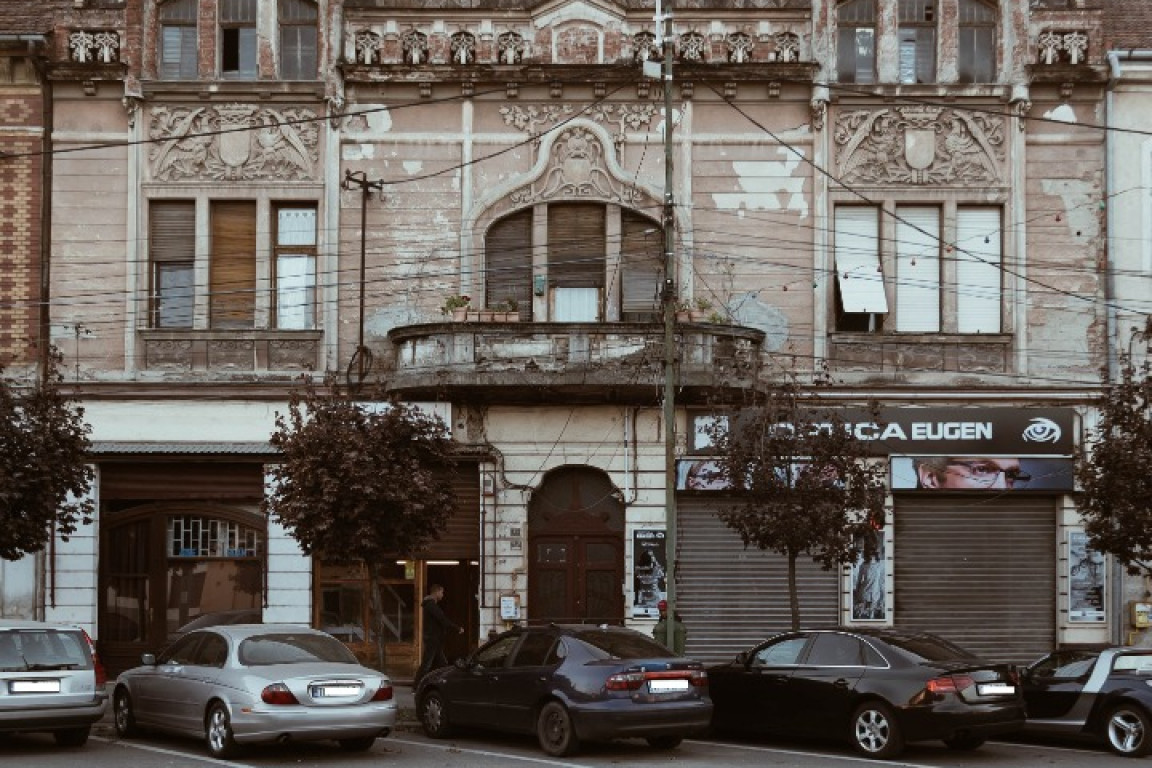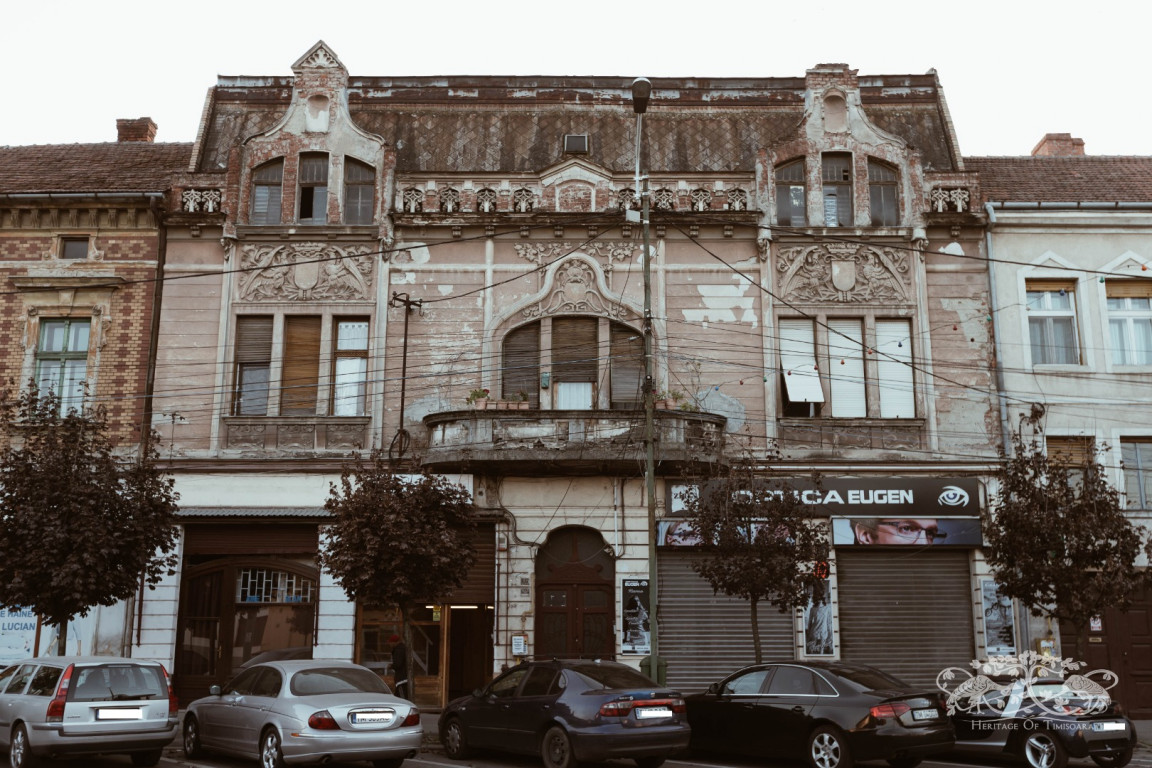With the construction of the new train station in Iosefin, in 1896, the importance of the Bonnaz Street (currently General Ion Dragalina Street), which connected the center of the neighbourhood to the train station, increases. Two years later, when the Savings Bank Palace is built, a new chapter begins in the development of the neighbourhood. In the following decade, the first of the 20th century, on the west side of the Bonnaz Street, several important buildings will be erected, either in a historicist style or in the style of the 1900s.
In 1906, József Lichtfusz (Josef Lichtfuss) purchases from József Worlitzky and his wife, Róza, a plot of land on the Bonnaz Street for which he pays 16.900 crowns. In April of the same year, Lichtfusz receives a building permit for a two storey building that can still be seen today at Boulevard Ion Dragalina no 19.
József Lichtfusz, whose initials can still be seen in the monogram located above the entrance to the building (LJ), was a member of the Administration Board of General Savings Bank Timișoara, a joint-stock company. He opts for an Art Nouveau building, which, nevertheless, has a few Neo-Gothic elements. The ground floor was meant for commercial purposes. Above the three windows on the first floor there are panes with complex bass-reliefs. The one in the centre contains a depiction of the tree of life, while the other two show vultures flanking a shield (which probably presented an inscription) surrounded by vegetal motifs. The facade is also decorated with four anthropomorphic ornaments representing demonic figures reminiscent of Gothic gargoyles, a rare element in Timișoara’s architecture. The cornice is elaborate, with Neo-Gothic decorations that, together with the demonic figures, remind one of the stone lacing of Gothic cathedrals.
The last mention of József Lichtfusz is in 1936, when records note that he was replaced as a member in the Great Council of the Roman-Catholic Community in District 4 (Iosefin).

